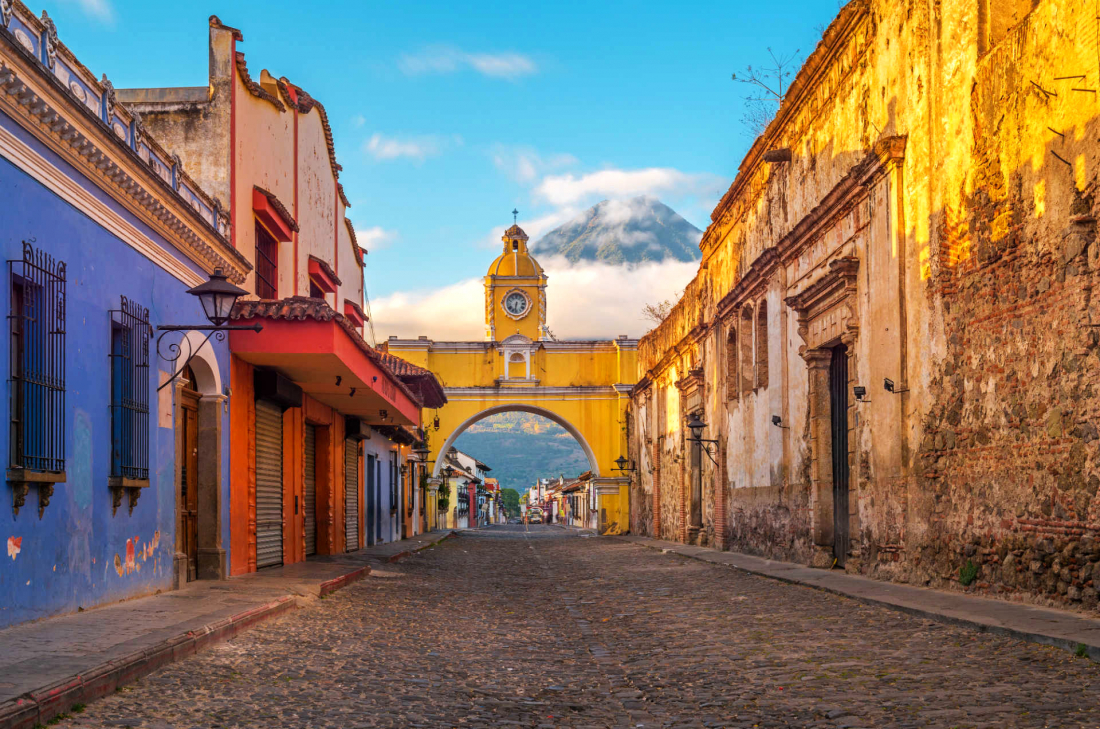Guatemala has a rich and distinctive culture from the long mix of elements from Spain and the native Maya people. This diverse history and the natural beauty of the land have created a destination rich in interesting and scenic sites.
It is a small country in the Central America region. It has borders to Mexico in the north/northwest, to Belize in the northeast, to Honduras in the southeast, to El Salvador in the south. It has a Pacific coastline to the southwest and a tiny piece of Caribbean coastline to the east.
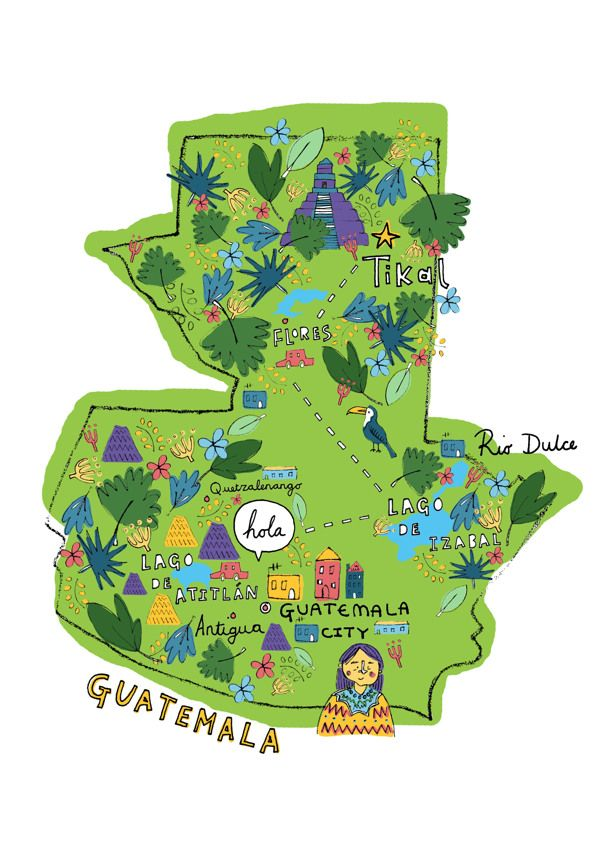
Source: https://i.pinimg.com/originals/19/95/c9/1995c9989916831da70f2174c9dc8bc7.jpg
1. Where to go: attractions, museums, interesting areas, non-commercial curiosities
LAND OF THE MAYA
The dizzying pyramids of Tikal are Guatemala's most famous tourist drawcard. The Maya villages in the highlands, where locals still wear traditional dress, are the most visible indicators of this centuries-old culture. But look closely when you're visiting an archaeological site and you'll see altars with modern offerings to ancient spirits.
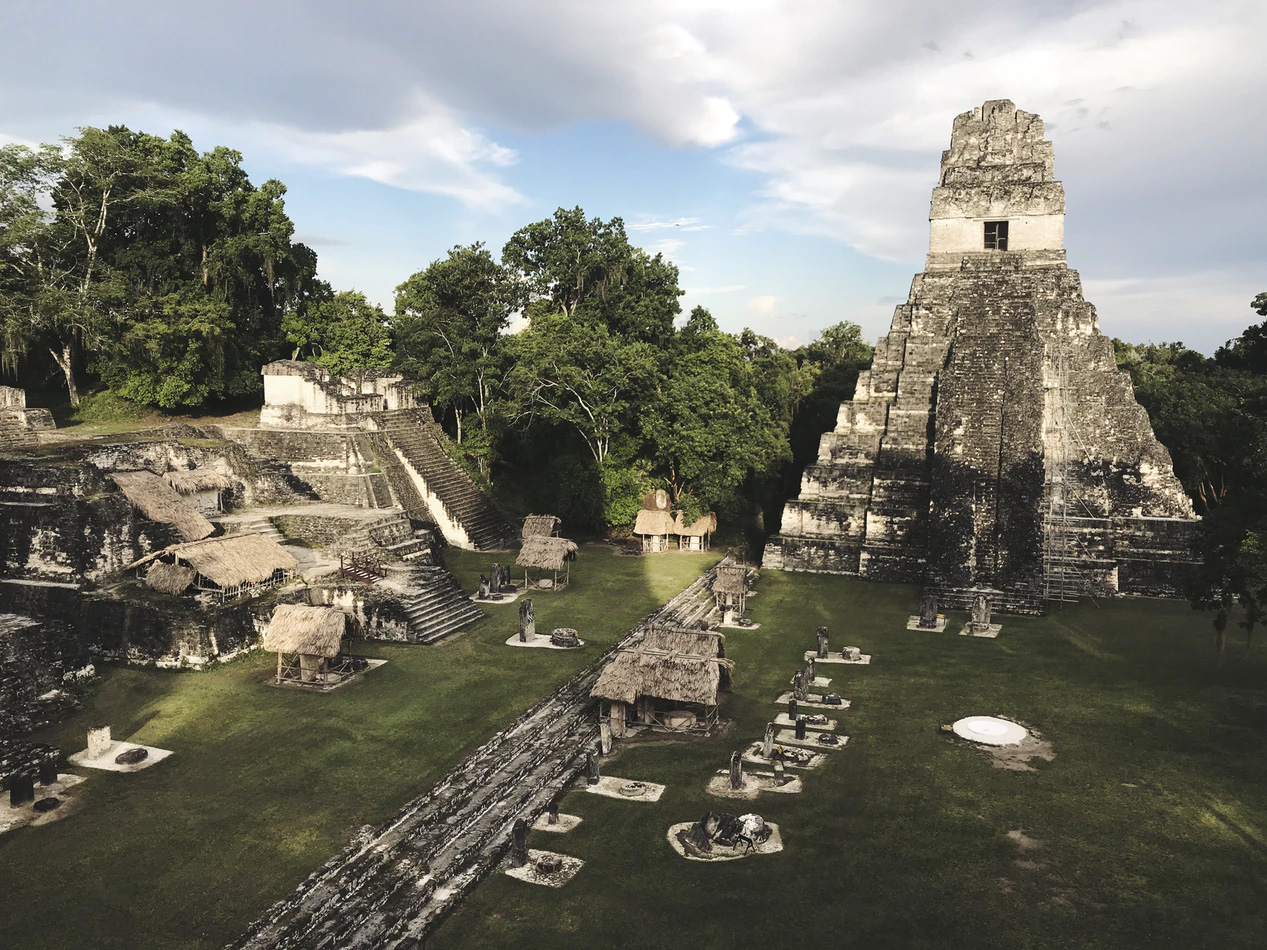
Source: Photo by Jimmy Baum on Unsplash
El Mirador is a massive early Maya site, perhaps the cradle of Maya civilization. It is still being uncovered and studied; less developed for visitors than the other largest Maya sites.
Tikal — long considered the largest of Maya ruins (although the ongoing investigations of El Mirador may challenge this claim), this huge and impressive ancient Maya site is probably worth the trip to Guatemala by itself. Stay in the park or in nearby Flores the night before in order to organise an early morning trip to Tikal, to see the sun rise over the ruins. Tours are easily organised from the surrounding areas.
Aguateca is some of the best-preserved Mayan ruins in Guatemala where you are more likely to encounter archaeologists at work than tourists with cameras.
To get to El Peru (Waká) take a three-day trek/boat trip from Flores. El Peru is identified as the source of many looted Maya artefacts.
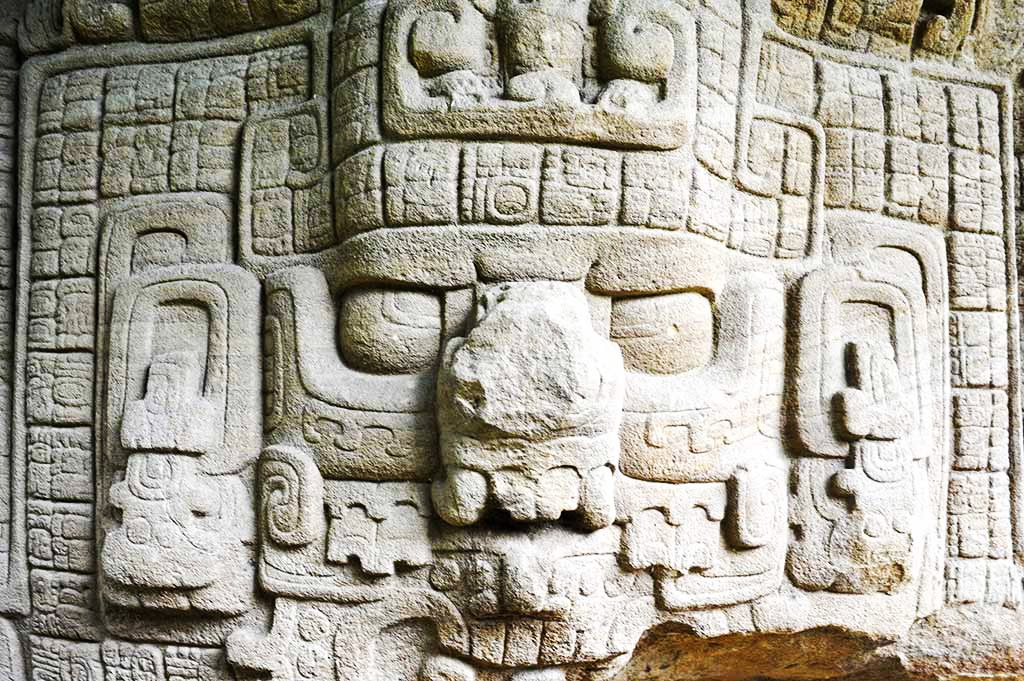
Source: https://moon.com/wp-content/uploads/2016/03/Guatemala_Quirigua_27545545_StefanEmber-123rf.jpg
Other impressive sites are Iximché ruins in the Central Highlands, an easy day trip from Guatemala City or Antigua; Nakúm, a Classic Maya site and Yaxhá, ruins with more than 500 structures, between Flores and Melchor de Mencos.
COLONIAL INFLUENCES
The Spanish left behind plenty of footprints from their colonial conquest of Guatemala, the most visible being the frequently stunning architecture. The best are dotted around Antigua, the old capital, with its neat plazas and crumbling ruins. From the grandiose buildings of Quetzaltenango to Guatemala City’s stately cathedral, to the churches and municipal buildings clustering around central squares in even the smallest towns, Guatemala bears the marks of its European encounters in vivid brick and tile.
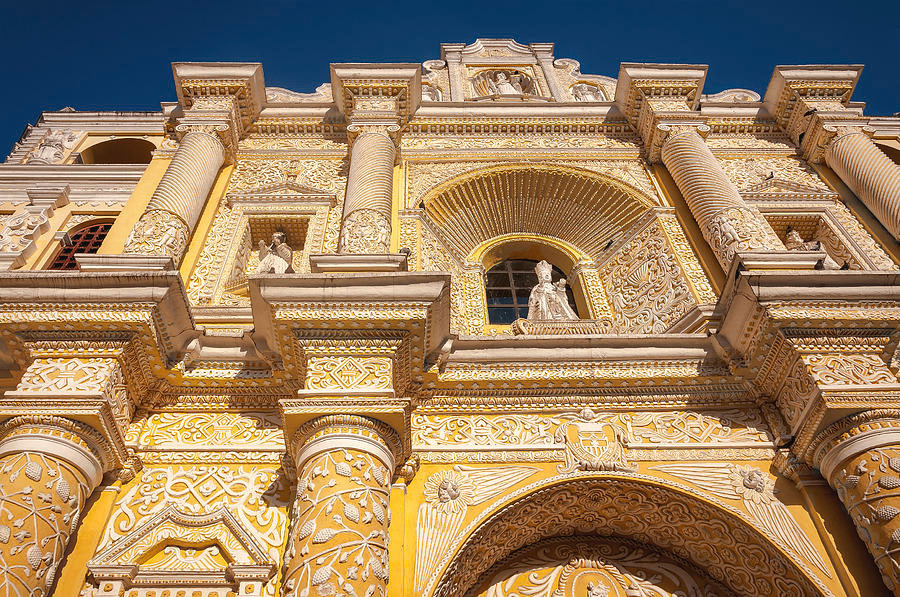
Source:https://images.fineartamerica.com/images/artworkimages/mediumlarge/1/architectural-arabesque-details-of-la-merced-church-in-antigua-guatemala-daniela-constantinescu.jpg
Wolfare- All you need when you want to travel 
Join our community and discover new places
NATURAL HIGHS
With barely 2% of its landmass urbanized, it’s not surprising that Guatemala offers some superb natural scenery. National parks are few but impressive, particularly in the Petén region, and the lush canyons of the Río Dulce make for an unforgettable boat ride.
WHAT TO SEE
Guatemala has a lot of volcanoes, many of them over 3,000 metres high. Volcán de Pacaya (2500m) is an active volcano about 30 minutes outside of Antigua. Some days it will not be accessible as the volcano may be too active to observe safely. Tour guides can be organised from Antigua. Up until its most recent significant eruption in late May of 2010, you were able to walk right up to see real lava and even roast hot dogs and marshmallows over it. Although trips are still common and travel agencies still boast this possibility with pictures of tourist doing so in the past, this is no longer possible.
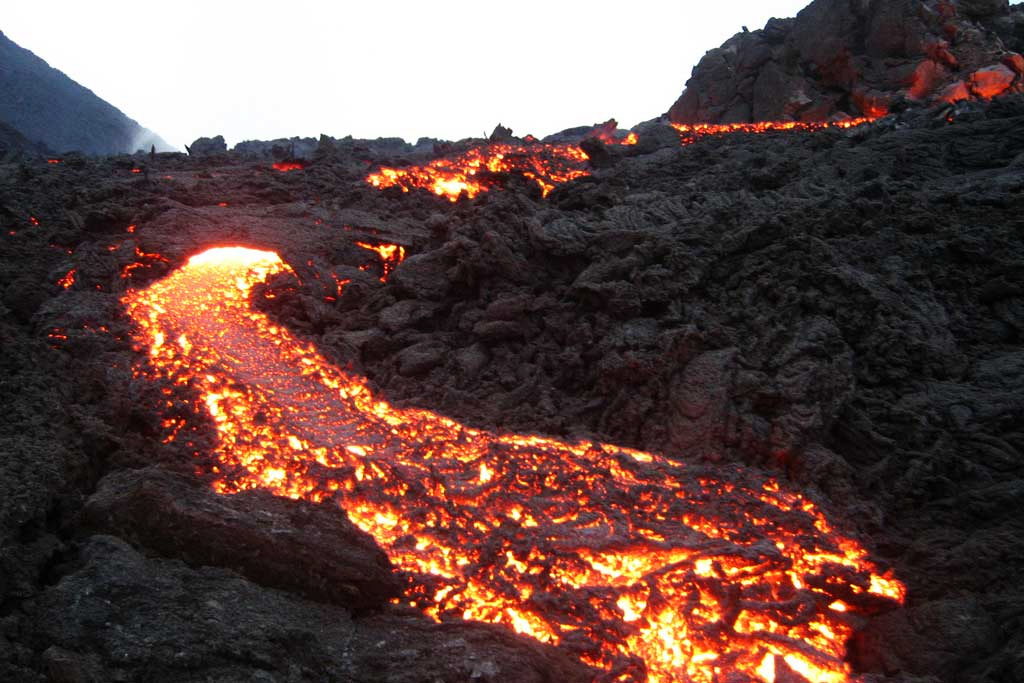
https://www.wolfare.com/images/2019/05/20/8-pacaya-volcano-eruption-guatemala-wolfare.jpg
Tajumulco is Central America’s highest point and a relatively easy climb, particularly if you take two days and camp overnight.
For the best experience of Santa María, get an early start and catch the sunrise and views that stretch from Mexico to Antigua and out to the Pacific.
San Pedro is a moderate half-day hike that rewards you with gorgeous views of Lago de Atitlán.
The natural beauty of the volcano-ringed Lago de Atitlán has been captivating travellers for centuries, and you can get high in the Cuchumatanes mountains or below ground in the cave-riddled Verapaces.
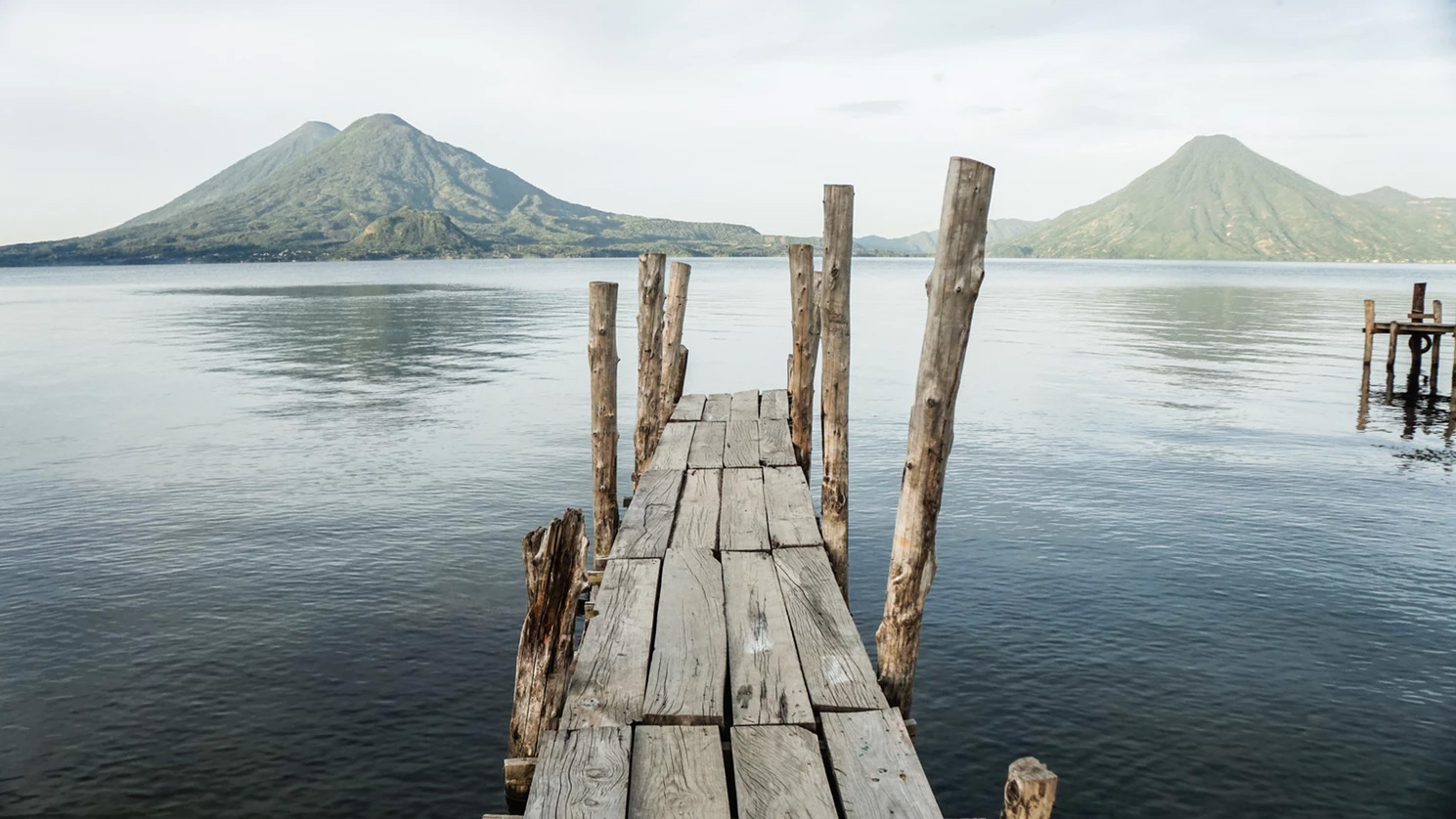
Source: Photo by Cameron Wilkins on Unsplash
The swimming hole that launched a thousand postcards, Semuc Champey, has to be seen to be believed, and you can dip your toes in both the Pacific Ocean and the Caribbean Sea.
WHAT TO DO
Active souls tend to find their agenda very full once they get to Guatemala. Stunning trekking routes through the jungles and up volcanoes, world-class white-water rafting, miles of caves to explore, and what seems like a zip line strung between every two trees in the country are just the beginning. How about paragliding around the high-altitude Lago de Atitlán? Or scuba diving in the same place? You might even luck onto some good swell on the surfer-friendly Pacific coast.
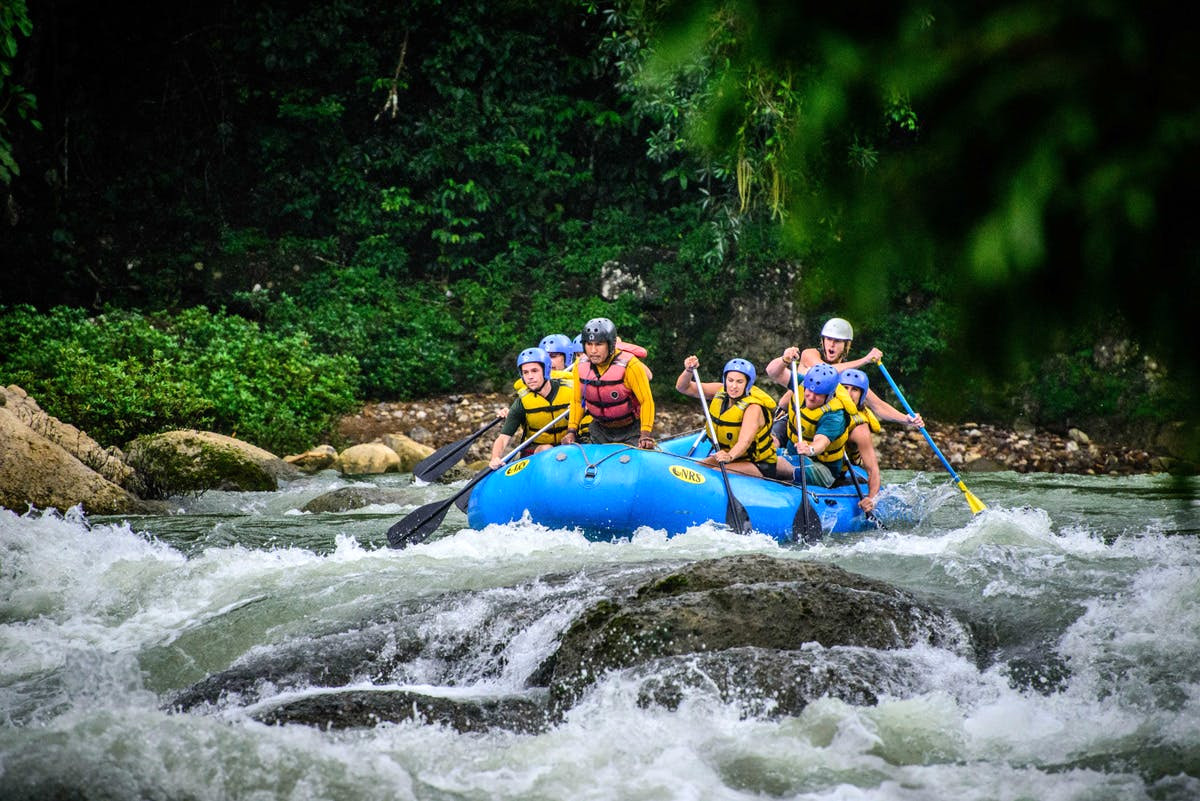
Source: https://www.anywhere.com/img-a/tour/rafting-7-5-coban-guatemala/CAHABON4-jpg
The three-day hike from Quetzaltenango to the lake is deservedly popular. Treks of several days are perfectly feasible, and agencies in Antigua, Quetzaltenango and Nebaj can guide you. In the Petén jungles of the lowlands, treks to remote archaeological sites such as El Mirador and El Perú offer an exciting challenge.
There's probably no better way to experience the Guatemalan highlands than by bicycle. Panajachel, San Pedro La Laguna, Quetzaltenango and Antigua, in particular, are the best launch points, with local agencies offering trips and equipment.
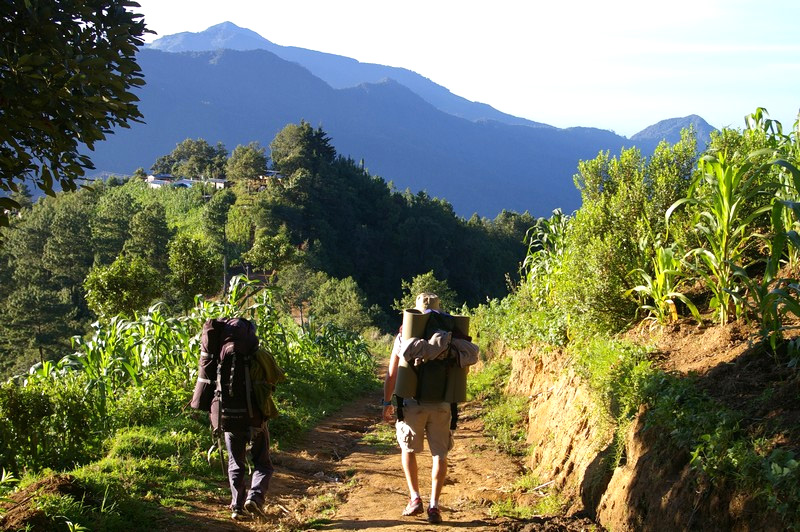
Source: https://altiplanos.com.gt/images/hikes/11_lagoatitlan.jpg
Wolfare- Travelling has never been easier 
Join our community and discover new places
Opportunities for a gallop, a trot or even a horse trek are on the increase in Guatemala. There are stables in Antigua, Laguna Brava and Nakum. Unicornio Azul, north of Huehuetenango, offers horse trekking in the sublime Cuchumatanes.
Guatemala attracts cavers from all around the world. The limestone area around Cobán is particularly riddled with cave systems, the full extents of which remain largely unknown.
National parks and nature reserves offer lots of wildlife-watching opportunities, while generally having few tourist facilities. Fine locations in the Petén jungles for birdwatching include Tikal, El Mirador, Cerro Cahuí, Laguna Petexbatún and (for scarlet macaws) the Estación Biológica Las Guacamayas and the Macaw Mountain Bird Park.
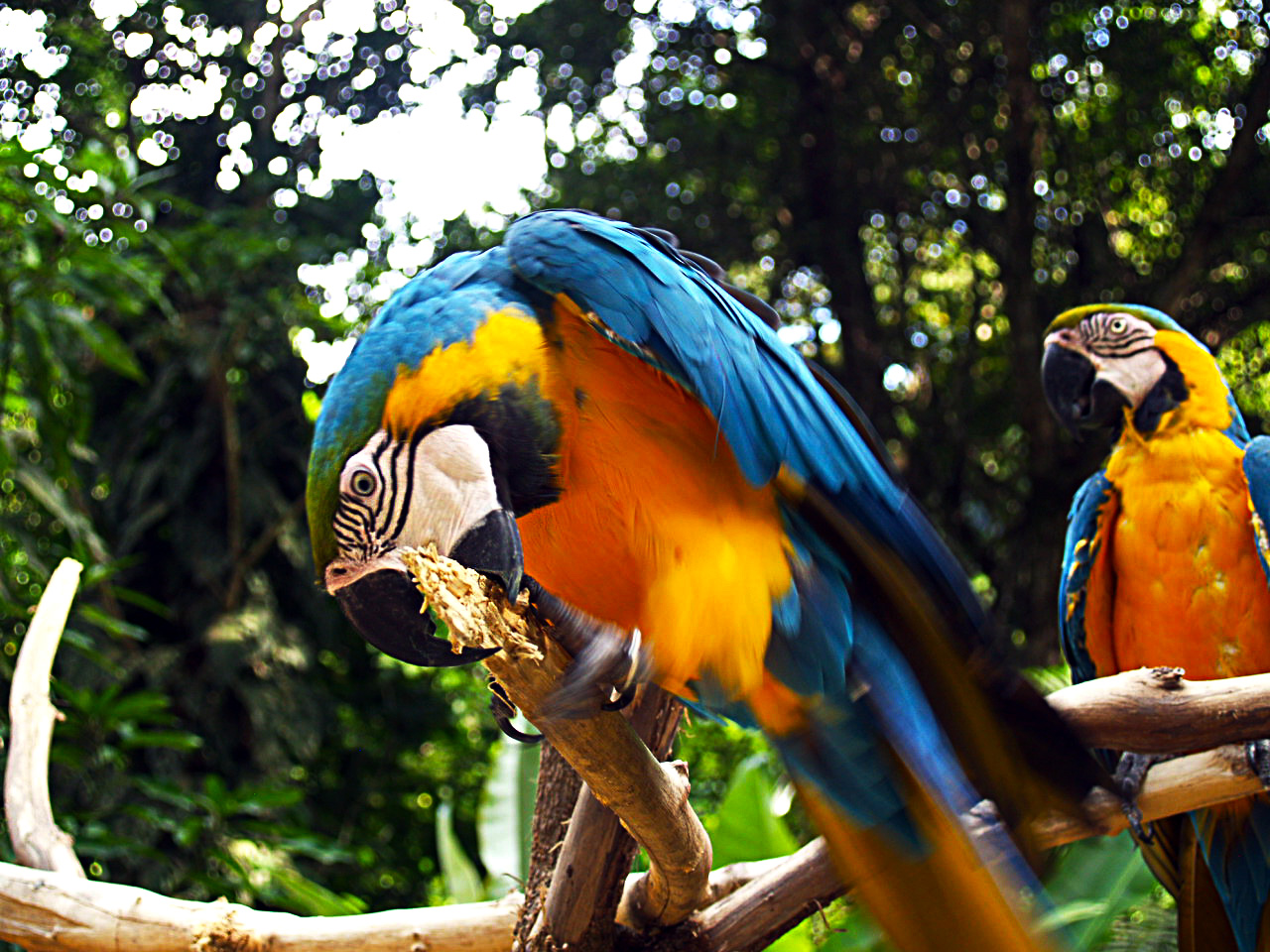
Source: https://upload.wikimedia.org/wikipedia/commons/4/43/Ara_ararauna_-Macaw_Mountain_Bird_Park-8b.jpg
2. Transport: flights, trains, buses, metro, taxi, etc. - price overview
BY PLANE
Guatemala's main airport, La Aurora International Airport (GUA), is in Guatemala City. International flights arrive mostly from other Central American countries and North America.
Guatemala's secondary airport is situated in Flores, Petén. This small airport receives flights from a small number of close destinations including Belize, Honduras, and Guatemala City.
There are direct flights from the USA with most major US airlines. AeroMexico and Interjet fly direct from Mexico City. Avianca has flights to Guatemala City from most Central American capitals. If you are coming from elsewhere, you will almost certainly be changing planes in the USA, Mexico or elsewhere in Central America.
Guatemala levies a departure tax of US$30 on outbound air passengers, which should be included in your fare. If it's not, it has to be paid in cash US dollars or quetzals at the airline check-in desk.
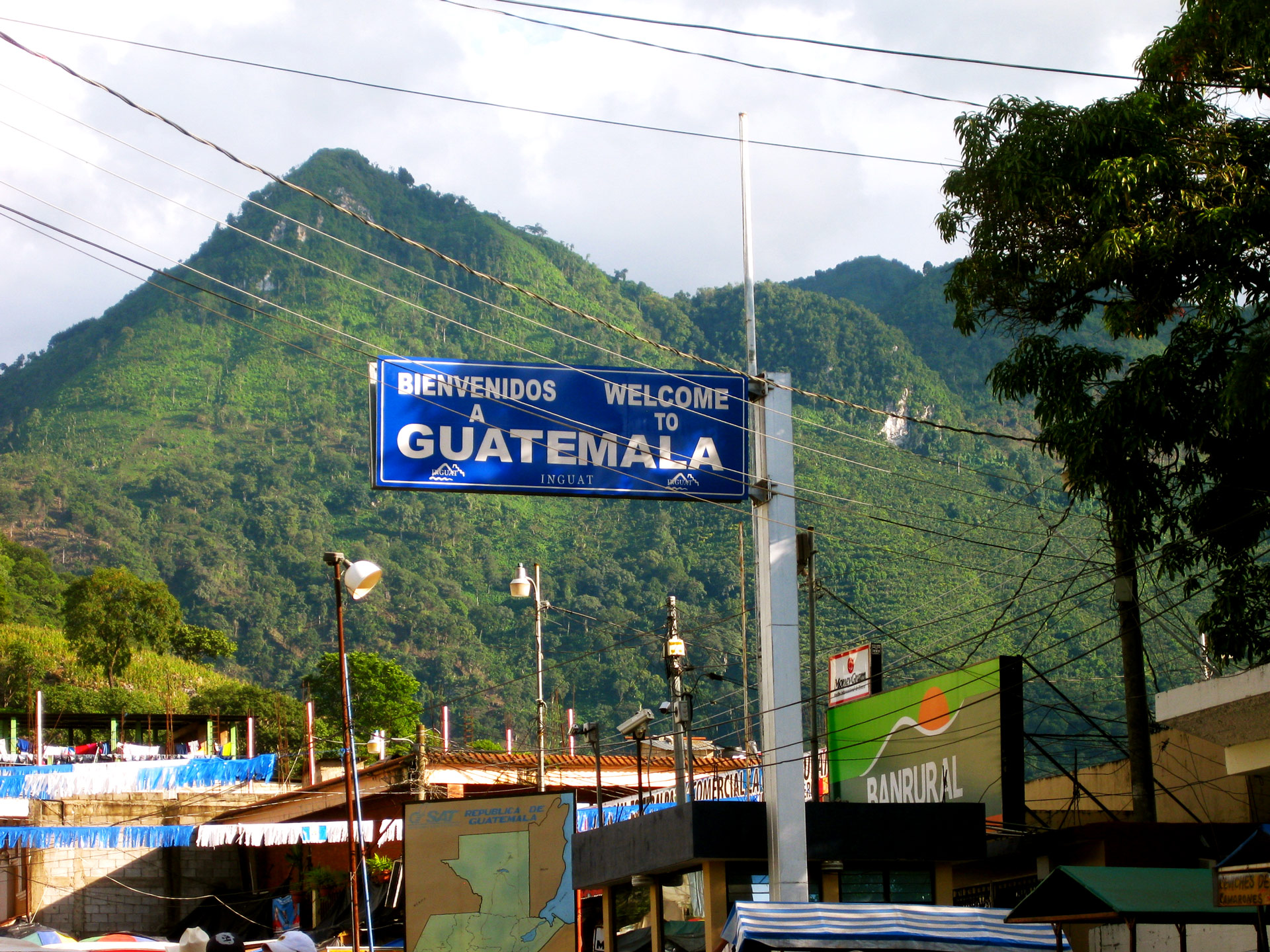
Source: https://hasselmann.files.wordpress.com/2011/10/img_2735.jpg
BY BUS
A bus is the most common way to enter Guatemala by land. Most first-class international buses run nonstop from Guatemala City to their destinations. First-class buses for Belize also depart from Flores/Santa Elena. On first-class buses (particularly to Honduras and El Salvador) the driver may take your passport and complete border formalities for you. Going to Belize or Mexico, you will be required to do them yourself. Whatever border fees (official or otherwise) there are will not be included in the ticket price.
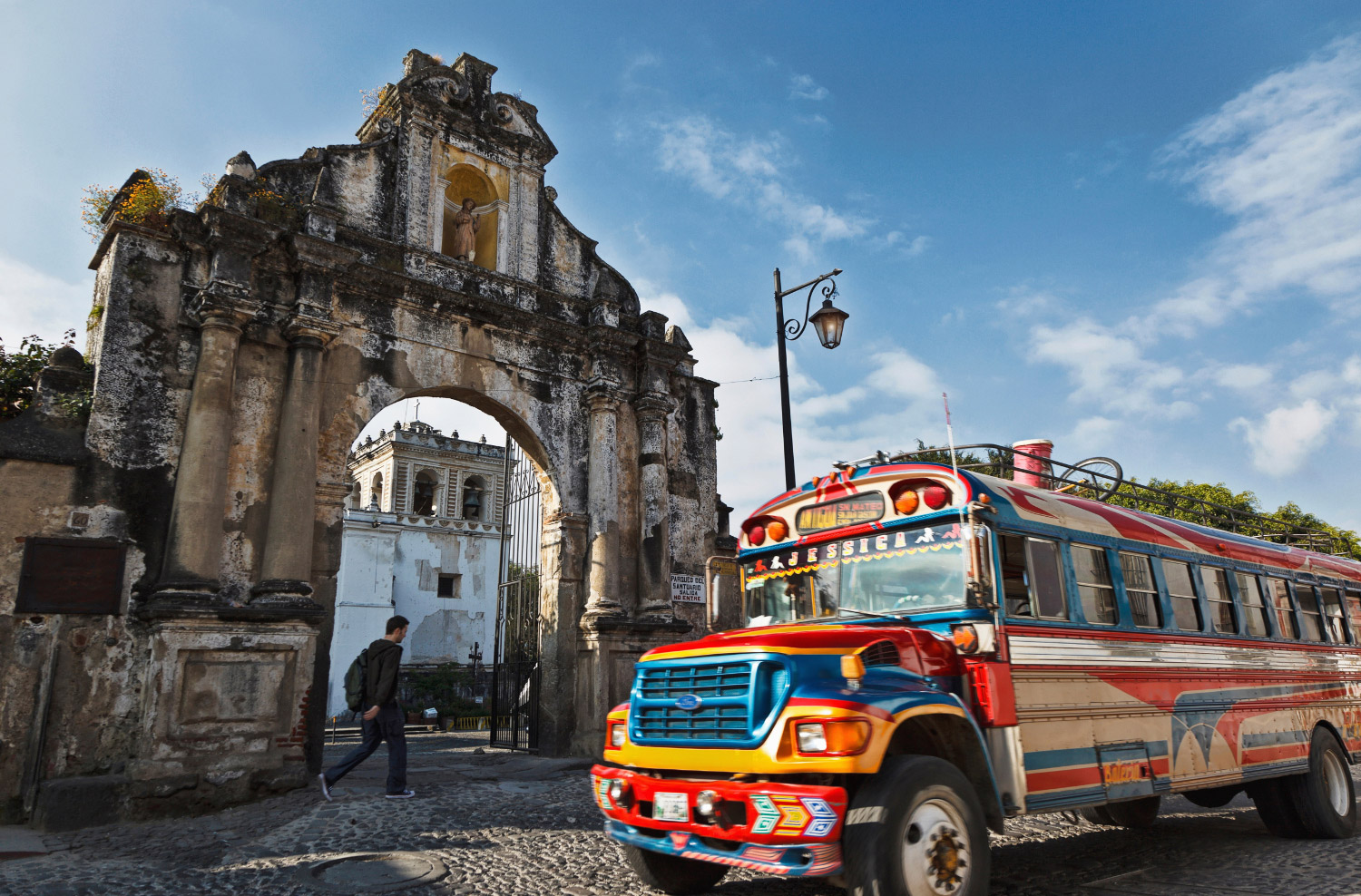
Source: https://www.lonelyplanet.com/travel-blog/tip-article/wordpress_uploads/2015/04/Antigua-chicken-bus.jpg
It's hard to miss the colourfully decorated buses that crowd the streets of major cities and highways of Guatemala. These are chicken buses, or camionetas in Guatemalan dialect Spanish, and are a common form of travel for Guatemalans and a travel adventure for tourists.
BY CAR
From Mexico, Honduras and El Salvador access is via the Pan-American Highway. Road access is also possible with more difficulty from Belize. If you've rented a car in Belize and wish to drive into Guatemala, the immigration officials will require you to produce a letter from the rental agencies authorizing you to take the car outside the country.
3. Accommodation: possibilities, rating - price overview
Guatemala has a wide variety of good accommodation options. You will likely find cheap hotels "hospedajes" in every town or village. Hospedajes normally provide either a bed in a communal room with a communal bathroom or private rooms with a communal bathroom. Private bathrooms in hospedajes are not found very often.
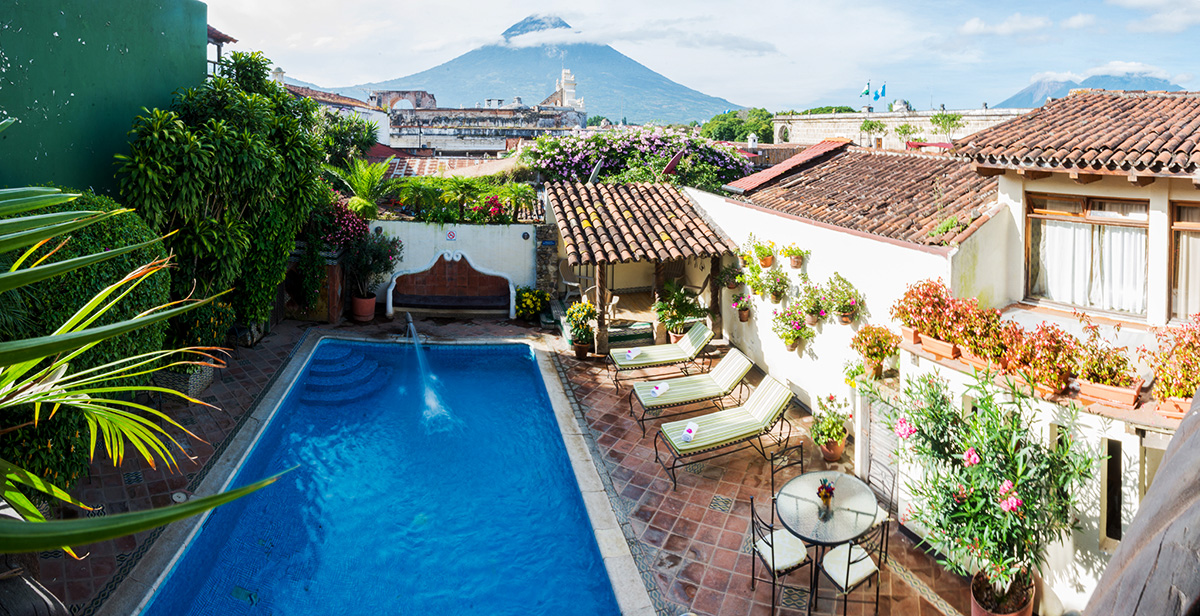
Source: https://www.hotelcasadelparque.com/wp-content/uploads/2017/07/hotel-casa-del-parque-antigua-guatemala-1.jpg
In the main tourist areas, there are also many high-quality hotels. You can find and book many of these accommodations in most major travel websites and also in other smaller online directories (for example Directory of Hotels in Guatemala).
It’s generally not necessary to book your accommodations in advance. If, however, you’re planning on being in Antigua or down at the beach during Semana Santa, the sooner you book the better.
Hotels range from desperate dives out by the bus terminal to fancy-pants boutique numbers, there is no shortage of options.
However, there are two important features in hotel bathrooms that first-time visitors need to adjust to:
- Toilet paper always goes in the bin provided, and never in the toilet itself, due to easily blocked drains.
- At cheaper hotels, bathroom showers might come with an electric fitting on the shower head to heat the water. Finding the balance between having water pressure slow enough to heat the water and strong enough to actually get you wet is always an adventure.

Source: https://ssl.tzoo-img.com/images/tzoo.hd.87946.5009.374381.GrandTikalFuturaHotel.jpg?width=392&spr=3
Hostels are starting to make a dent in the budget accommodations scene, especially in backpacker-favoured destinations such as Antigua, Quetzaltenango and around Lago de Atitlán.
Camping can be a hit-or-miss affair as there are few designated campgrounds and safety is rarely guaranteed. Where campsites are available, expect to pay from Q20 to Q50 per person per night.
4. Traditional food and meals: what, where
Guatemalan cuisine reflects both the old food of the Maya – corn (maize), beans, squash, potatoes, avocados, chillies and turkey – and the influence of the Spanish – bread, greater amounts of meat, rice and European vegetables.
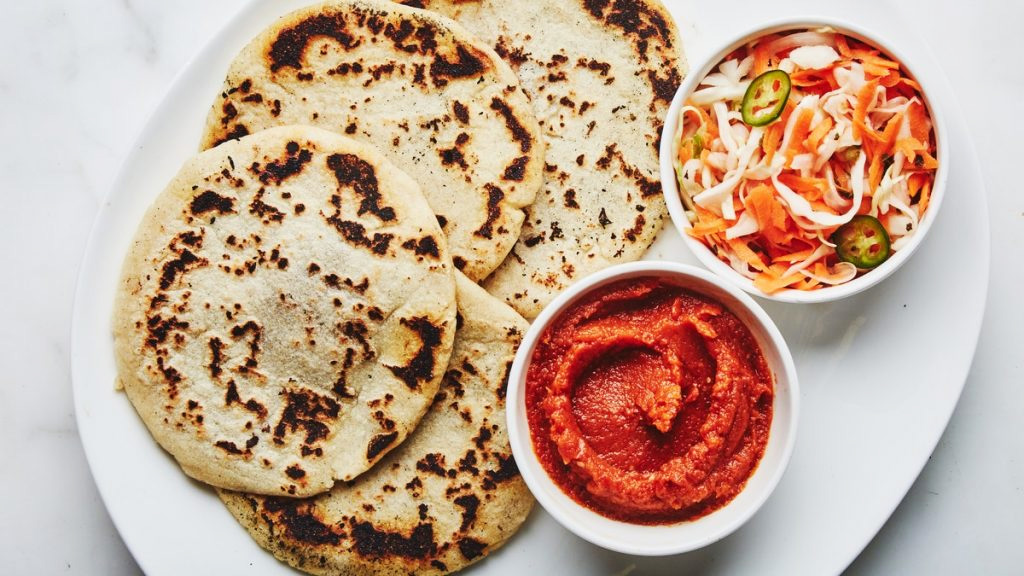
Source: http://prolagoatitlan.org/wp-content/uploads/2018/01/0417-web-pupusa-beauty-1024x576.jpg
The fundamental staple is the tortilla – a thin, round patty of cornmeal cooked on a griddle called a comal. In restaurants, tortillas accompanying meals are unlimited. In the unlikely event that you run out, just ask for more.
The second staple is frijoles (fri-hoh-les), or black beans. These can be eaten boiled, fried, refried, in soups, spread on tortillas or accompanying eggs. They may come served in their own dark sauce, as a runny mass or a thick black paste.
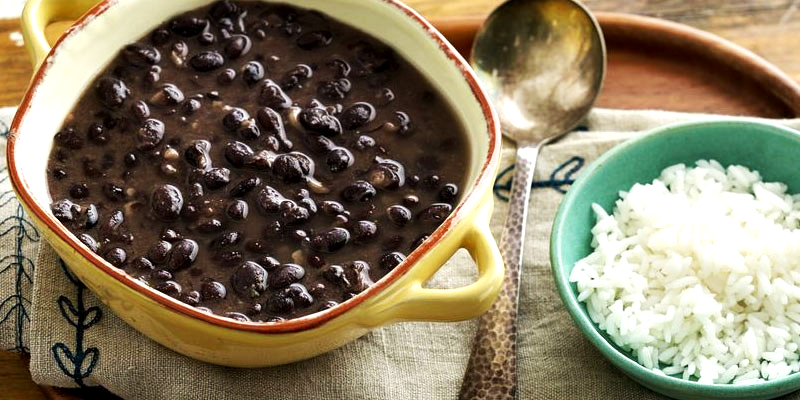
Source: https://aprende.guatemala.com/wp-content/uploads/2018/01/caldo-frijol.jpg
Desayuno Chapín (Guatemalan breakfast) is a large affair consisting of (at least) eggs, tortillas, beans, fried plantains and coffee. Anywhere tourists are, you’ll probably have the option of Desayuno Americano (American breakfast), which will include some combination of bacon, pancakes, cereal, eggs, fruit juice and coffee.
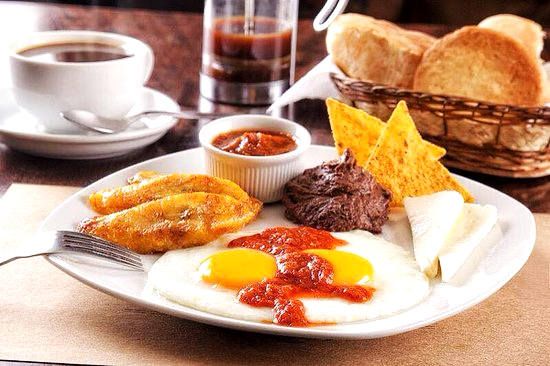
Source: https://media-cdn.tripadvisor.com/media/photo-s/13/dc/51/ce/desayuno-chapin-huevos.jpg
La Cena is, for Guatemalans, a lighter version of lunch, usually eaten between 7pm and 9pm. Even in cities, few restaurants will serve you after 10pm. In smaller villages, dinner will look very similar to breakfast – tortillas, beans, eggs and plantains.
Atole de Elote is a popular warm corn drink. This sweet concoction must be drunk while warm; when cold, it becomes much too dense.
5. Visas and licences - price overview
Valid passports are required, except for citizens of Central American countries. People producing valid passports from the following countries do not need a visa to visit Guatemala:
Andorra, Argentina, Australia, Austria, Belgium, Belize, Brazil, Canada, Colombia, Costa Rica, Chile, Denmark, El Salvador, Finland, France, Germany, Greece, Honduras, Ireland, Israel, Italy, Japan, Liechtenstein, Luxembourg, Malaysia, Mexico, Monaco, Netherlands, New Zealand, Nicaragua, Norway, Panama, Paraguay, Poland, Portugal, Russia, Singapore, South Korea, Spain, San Marino, Sweden, Switzerland, Taiwan, Turkey,United Kingdom, United States of America, Vatican City, Venezuela.
6. Vaccinations
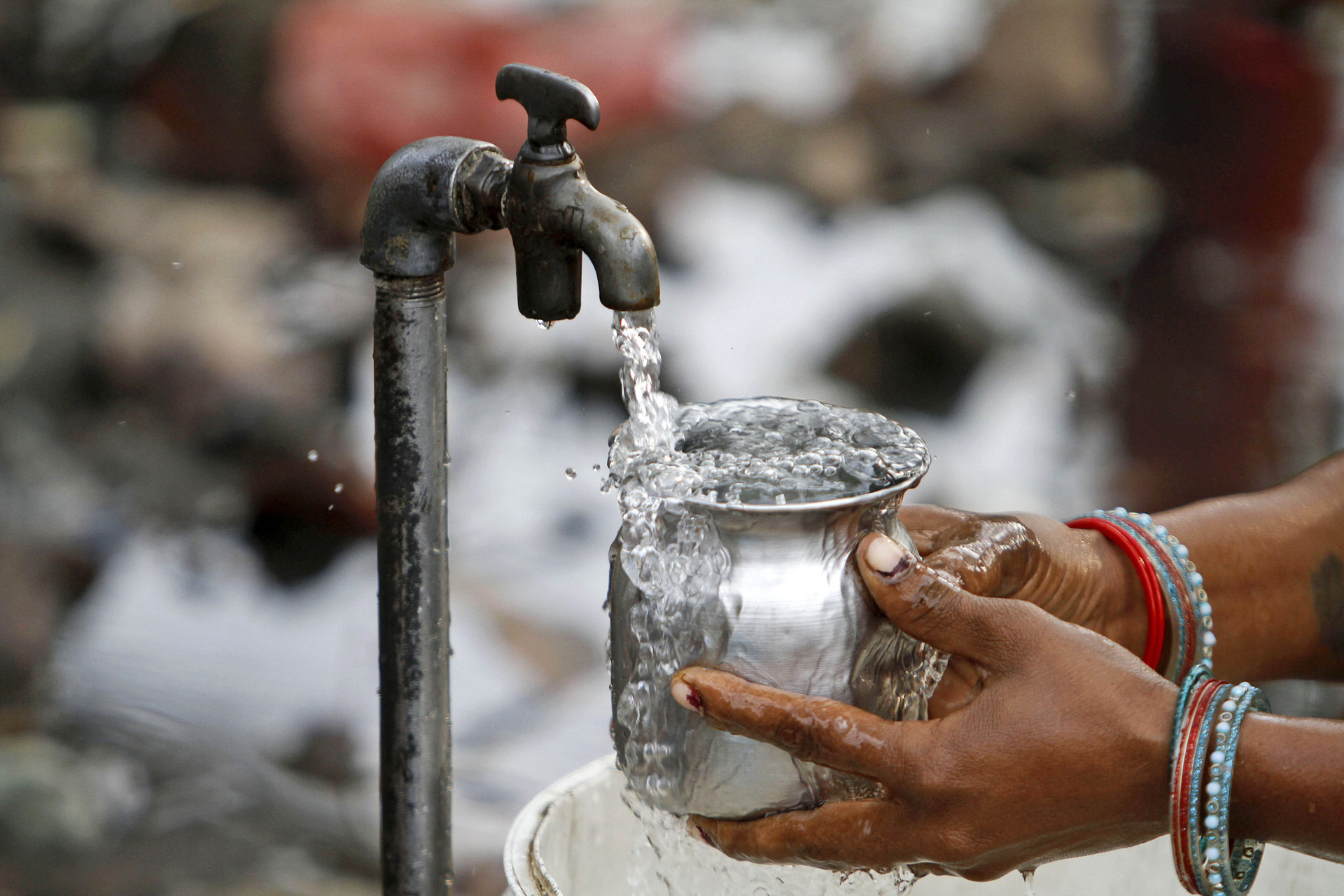
Source: https://helloscience.io/static/uploads/4ff529a3-8380-44ba-b209-72c8fdff56d4.jpeg
The CDC has identified Guatemala as an affected area of the Zika outbreak. Pregnant women are advised to be cautious as the virus can lead to birth defects. Adults affected by the virus experience fever, rash, joint pain, and conjunctivitis (red eyes) typically lasting a week.
CDC also states that malaria risk exists in rural areas at altitudes lower than 1,500 metres, with no risk in Antigua or Lake Atitlán. Preventative anti-malarial medication can and should be purchased ahead of visiting malaria-endemic areas.
Drink only purified water (Agua Pura Ecológica is recommended by most hospitals and hotels).
Dengue fever is endemic throughout Guatemala and Hepatitis A & B vaccinations are recommended.
7. Health care
Larger towns have both public (cheap, with long waiting times) and private (expensive, but faster) hospitals, often with doctors who speak at least a little English. In smaller towns, there will be a health clinic, and in villages, there is usually a doctor. Guatemala City naturally has the best range of health services in the country.
Health care is relatively cheap in Guatemala (around Q30 for a standard doctor’s consultation).
By far the most common health issues that travellers to Guatemala experience are stomach-related. This can range from serious diseases such as cholera to simple cases of diarrhoea. Watch what you eat, drink and generally put in your mouth.
8. Required equipment: what do you need to pack
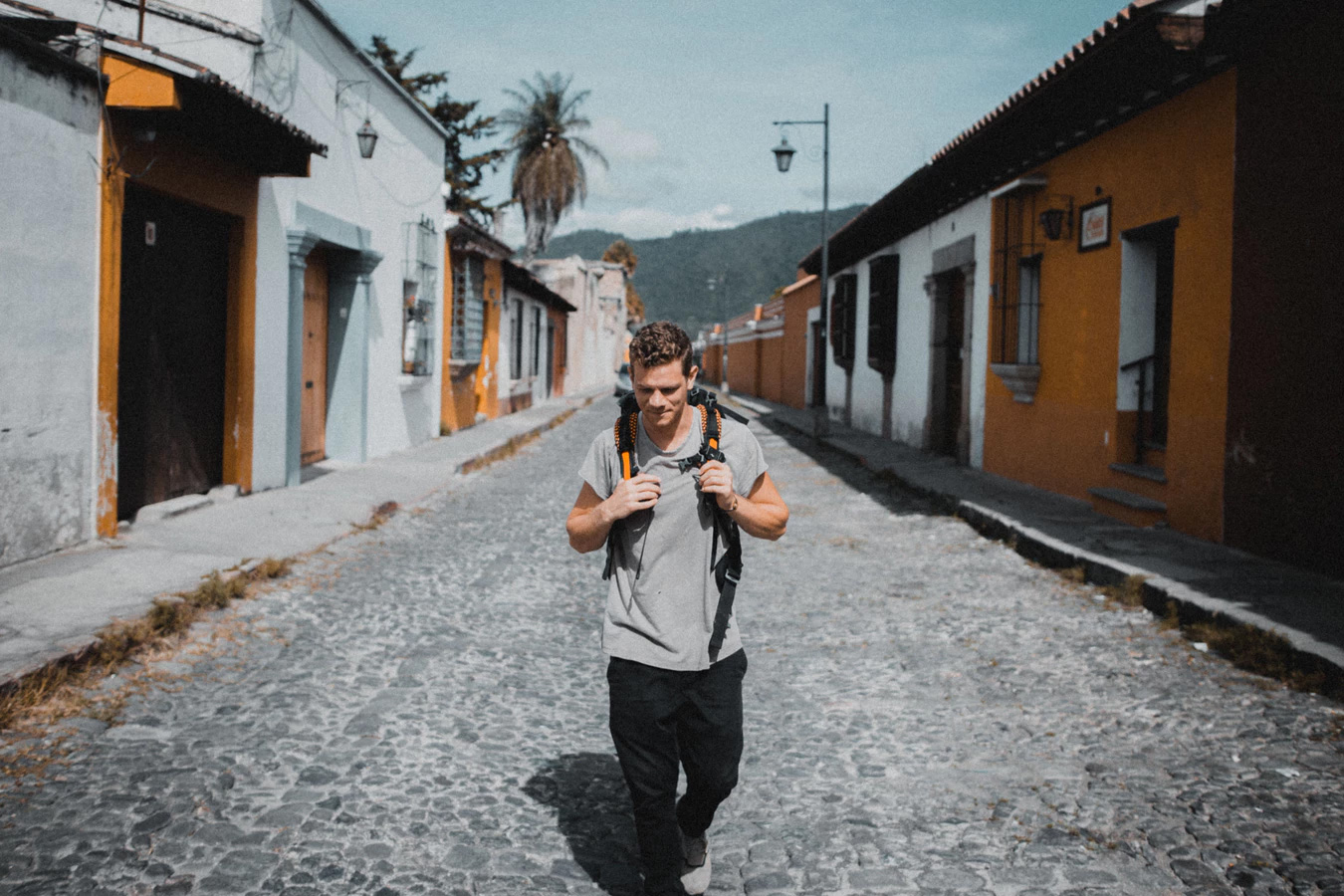
Source: Photo by Perry Grone on Unsplash
Pack as lightly as possible. Anything that locals use on a day-to-day basis can be bought cheaply. Anything remotely luxurious (electronics, imported goods etc) will be cheaper at home.
Shorts and sleeveless tops are OK for the beach and coastal towns. In the highlands people tend to cover up more – a sensible move, considering the climate. Dress conservatively when entering churches and visiting rural communities.
Other useful things to pack:
- International plug adapter (for non-US appliances)
- Spanish phrasebook
- Small medical kit
- Good walking shoes
- Warm clothes if going to the highlands
- Sunscreen and insect repellent
9. Insurance: in case it is necessary
Despite relatively low costs for health care, it is strongly recommended that travellers to Guatemala take out travel insurance, covering medical costs. Check your policy carefully to see what is and is not covered before buying. Emergency medical evacuation is a recommended inclusion.
|
- More than 140 countries
- We cover 150 activities you love
- 24/7 emergency assistance
- Cover your bags, tech or gear
10. Weather conditions
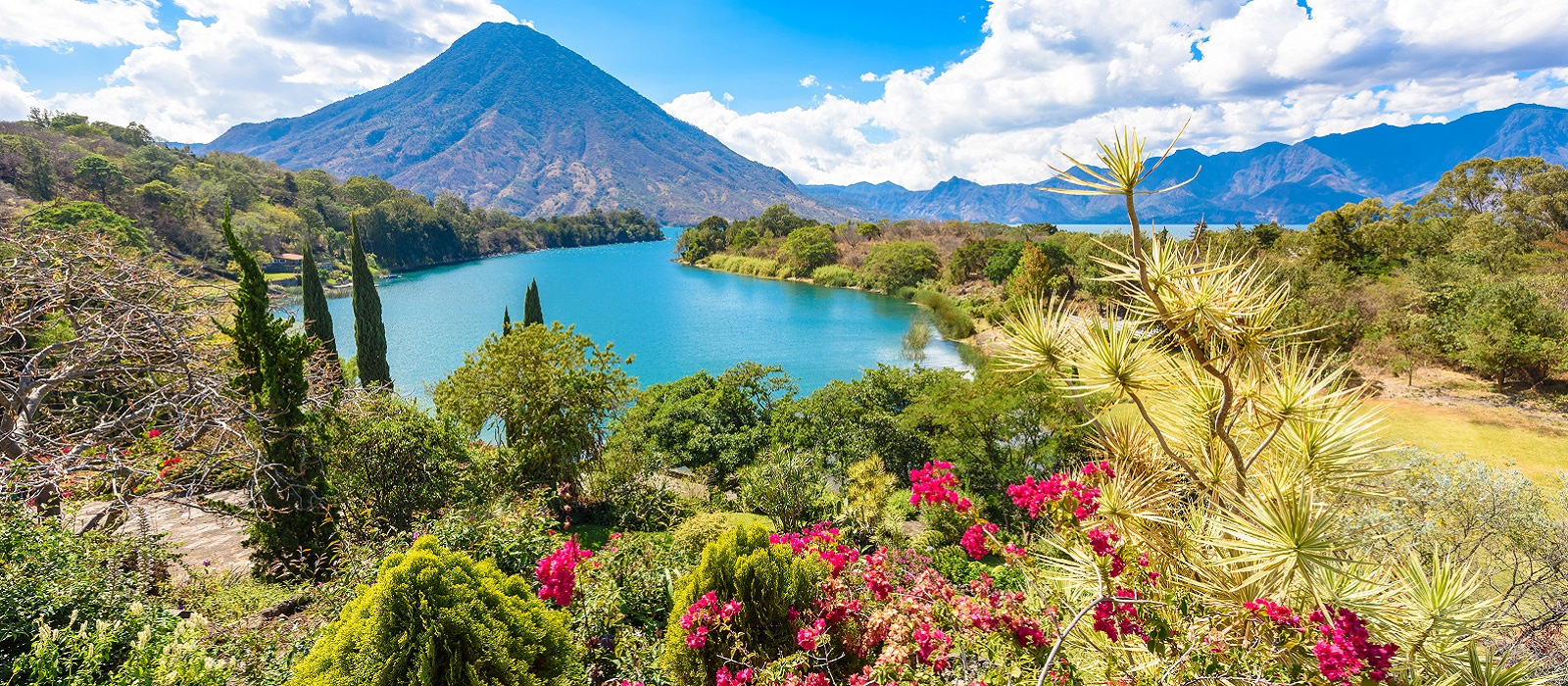
Source:https://res-1.cloudinary.com/enchanting/et-web/2018/10/Enchanting-Travels-Guatemala-Tours-Lake-Atitlan-Beautiful-bay-of-Lake-Atitlan-with-view-to-Volcano-San-Pedro-in-highlands-of-Guatemala-Central-America.jpg
The climate in the Central and Western Highlands is generally mild. It can get cool at night even in the summers, especially at the higher altitudes.
El Petén and the Pacific Coast are tropically hot and steamy.
It is difficult to travel in the more remote areas during the rainy season between mid-May and mid-October (into mid-November in the north). The months of March and April are very hot especially in the low lying areas such as the Pacific coastal plain.
11. Dangerous places
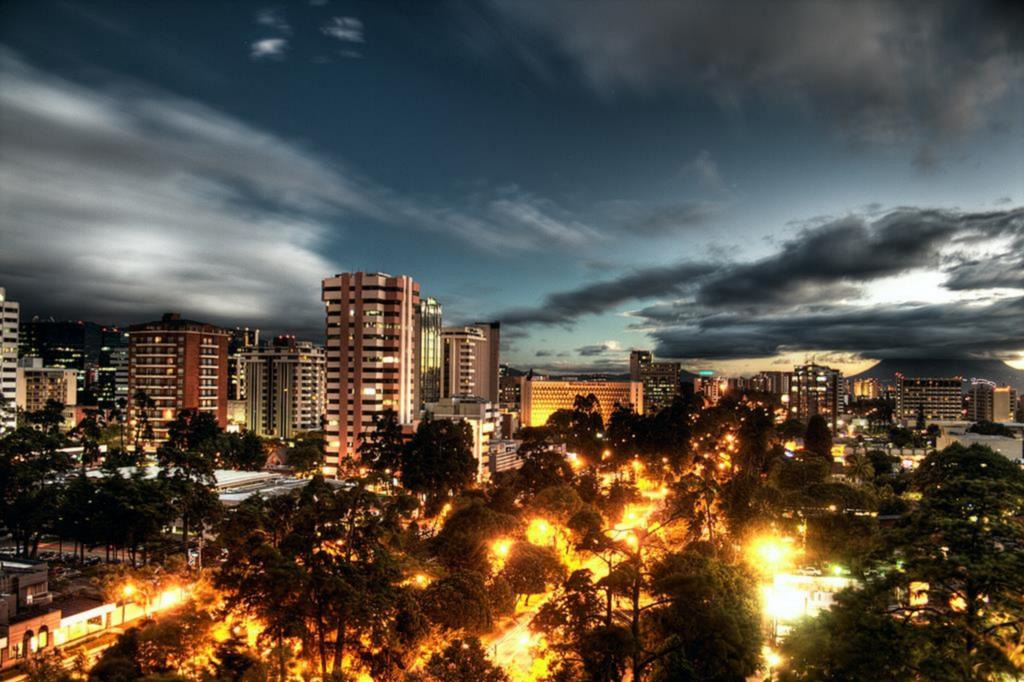
Source: https://t-ec.bstatic.com/images/hotel/max1024x768/900/90020517.jpg
Do not go to areas known to be hotbeds of drug trafficking activity (ie: some parts of the Peten), and do not go to the most dangerous neighbourhoods in Guatemala City (zones 3, 6, 18, and 21).
Be careful in Zone 1 in Guatemala City, especially after dark, and do not stay in any hotels there. Using the slightly more expensive hotels in Zone 10 or Zone 13 (near the airport) is a better idea if you intend to visit Guatemala City.
Guatemala has an abundance of natural beauty and numerous treks. But some of these are notorious for robberies (Volcan de Agua, trails around Lago de Atitlan, Volcan de Pacaya). Always ask around about the situation before embarking blindly.
12. The political situation, safety and criminality in the country
Violent crime rates are high throughout the country, including sexual assault, theft, armed robbery and carjacking. Pickpockets are prevalent in major cities in Guatemala, namely Guatemala City. Extortion calls and grandparent scams are also common throughout the country, as are credit card scams at ATMs.
Though Guatemala experiences high crime rates, it's possible to have a safe experience travelling there, as long as you take the necessary precautions:
- Women should be especially careful around men, even if the men present themselves as local hotel employees.
- Do not use buses at night in Guatemala City, as buses are frequently robbed by gangs.
- Never take photos of children without permission. Some Guatemalans are extremely wary of this and will think that you are mixed in with kidnappers and planning to take the child for ransom.
- It is dangerous to travel between cities after dark. Doing so significantly increases your risk of being the victim of an armed robbery.
- Pickpocketing is common in markets, so never keep anything in your back pocket and take as little with you as possible.
13. Additional information: brief and concise
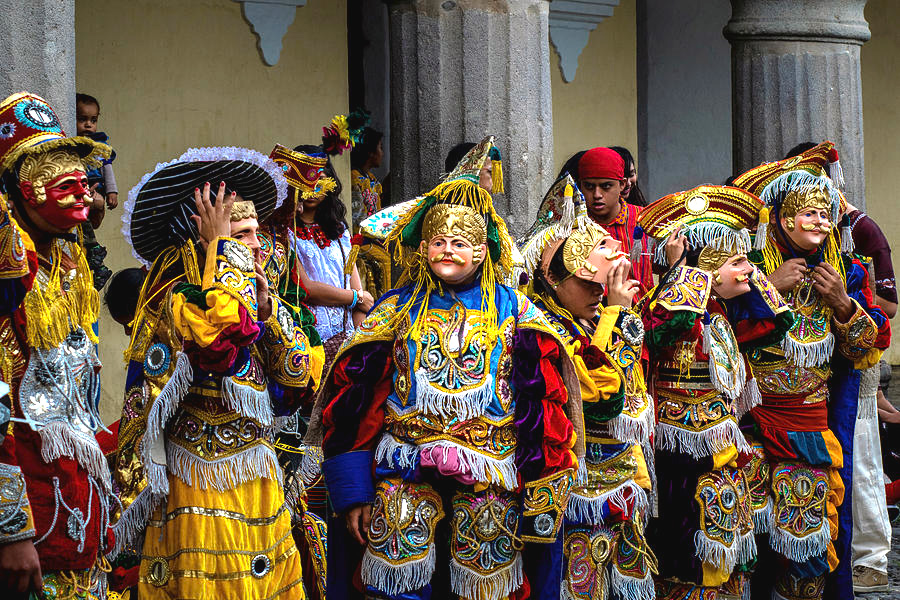
Source:https://images.fineartamerica.com/images/artworkimages/mediumlarge/1/2-danza-folklorica-guatemala-totto-ponce.jpg
Address people you don't know in a formal manner (Señor, Señora, Usted), and greet people in the following way:
day - "Buenos días" "Feliz día"
night- "Feliz Noche" "Buenas noches"
- General standards of modesty in dress have relaxed somewhat. Coastal dwellers tend to show a lot more skin than highland types, but not all locals appreciate this type of attire.
- When meeting someone personally, men shake hands with men, women air-kiss women, and men and women may air-kiss or shake – wait to see if the woman offers her hand.
- Many Maya women avoid contact with foreign men. As a general rule, male travellers in need of information should ask another man.
- Understandably, the Maya can be very sensitive about being photographed. Always ask for permission before taking pictures.
14. Main Facts
- Capital city
Guatemala City
- Currency
quetzal (GTQ)
- Official language
Spanish 60%, Amerindian languages 40%
- Calling code
+502
- Area: km²
108,890km²
- Time Zone
UTC-6
- Drivers: right or left side
right
- Religion
Roman Catholic, Protestant, indigenous Mayan beliefs
Wolfare- Connecting Travellers 
Join our community and discover new places
